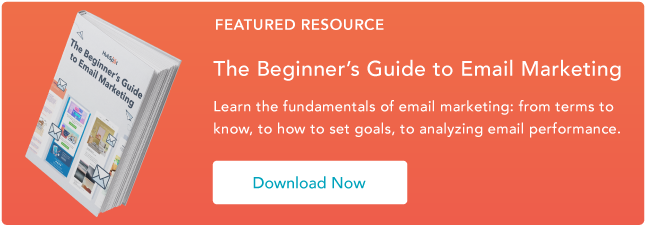I Asked ChatGPT to Write 3 Marketing Job Inquiry Emails — Here’s What I Got
- February 24, 2024
- Knowledge Base
- 0 Comments

As a full-time freelancer, I’ve sent out hundreds of job inquiry emails.
While I also reply to freelance role ads, I know first-hand that you can win some of the best projects by being proactive and running outreach. In fact, that’s how I started cooperating with some of the world’s most renowned brands.
Just because a company you’ve got your eyes on hasn’t advertised a role doesn’t necessarily mean they’re not open to bringing the right person on board. Your job, however, is to grab their attention and show why you’re a good fit for the organization.
Sound a bit scary to get in touch with a company that isn’t actively looking?
Well, you might change your mind if you look at the number of applications businesses receive the second they post an opening on LinkedIn – it’s in the hundreds. And that’s scary.
If you don’t know how to go about creating a job inquiry email, then keep reading — I’ll tell you all about it.
Table of Contents
What is a job inquiry email?
A job inquiry email is a message you send to a company you’d like to work for but doesn’t currently have any job openings for someone in your field.
The email acts as a letter of interest, where you introduce yourself, mention your qualifications, and briefly explain what makes you a good fit for the organization.
You also add a CV in the attachment so that the company can get a better idea of who you are.
How to Write a Job Inquiry Email
It’s time for some practice. Here are a few tips that I follow whenever I write a job inquiry email.
1. Research the company first.
I’m assuming that you usually send a job inquiry to a company that you like and admire, so you know a thing or two about them.
But that’s not enough. You need to do proper research, which goes beyond visiting their site and quickly scrolling through their social media profile.
Google the brand and search for any interesting articles that you could refer to in your email, like being recognized as the best place to work.
Alternatively, you can try to find out who is responsible for recruitment and do a little digging on the person you’ll be contacting. It will be easier for you to build a connection. A generic email will not get you far.
Kimberley Tyler-Smith, an executive at Resume Worded, says, “A generic email gets lost in the inbox. Showing you’ve researched the company, their challenges, and their recent campaigns, you instantly put yourself in the ‘intriguing’ pile.”
Tyler-Smith suggests that applicants dig into industry publications, social media, and news mentions. Find out the company’s current projects, challenges, or recent successes.
“Make it clear how your skills and experience directly address the company’s challenges or opportunities. Did you love their latest marketing push? Did you notice a gap they’re not filling? Tie your skills and experience directly to these. Then offer a solution or suggestion,” she says.
Since marketing is about showcasing the brand, a candidate’s email needs to demonstrate that they have properly researched the business.
They can do it by referencing the brand’s messaging, the digital outlets it utilizes, and mentioning its history within their email’s context, says Christy Pyrz, chief marketing officer at Paradigm Peptides.
“By focusing on candidates who have shown in their job inquiry email that they have taken the time to research the brand, recruiters will find a hire that is the right person for the marketing position,” says Pyrz.
2. Start with a strong opening.
Most professionals receive anywhere between 50 to 100 emails every day. That’s a lot, especially considering how little time most of us have in between deep-focus work and meetings to check our inboxes.
Your email’s subject line and preview text need to stand out to catch the hiring manager’s eye and drive them to open it. Email clients typically display 50-90 characters of the message in preview.
What should those first few words focus on? Connor Butterworth, the CEO and owner of Southwestern Rugs Depot, says that your email should forge a bond by tailoring your message to the company’s recent achievements or news.
“If I receive an email that references, for instance, a recent campaign of ours and explains how the candidate’s skills could enhance similar projects, it instantly sets them apart,” he says.
Andrea Hoymann, head of strategy at Brand chemistry, agrees and provides an example of the information she’s looking for.
“Tell me something very specific you’ve noticed about our marketing. If you liked a post on social media, tell me why and how it’s relevant to our target market. And if you’ve improvement suggestions, it’s even better!” she says.
Personalizing the opening and the remainder of the email tells the potential employer that you haven’t sent the same message randomly to hundreds of companies.
“It also shows your strategic thinking as a marketer and gives me a glimpse of the ideas and perspectives you could bring to the team,” adds Hoymann.
3. Treat every job inquiry email as a micro-pitch.
Since our inboxes get flooded with emails every day, if you want to make sure that yours doesn’t disappear in the ether, you should treat every job inquiry email as a micro-pitch.
Remember, you only have a few seconds to grab the hiring manager’s attention. So, what can you include in your email?
Mark McShane, HR and managing director of AED Training, says, “Start with an impactful opener that distills your professional essence and clearly shows how your skills meet company requirements.”
For example, McShane says, let’s say you’ve bolstered social media engagement by 50% through innovative campaigns in your past role. This metric will captivate an employer.
“It’s not simply about enumerating accomplishments; it involves illustrating the link between your talents and their potential to drive the company’s marketing goals,” McShane says.
4. Attach your CV.
Even though your email should include some of your accomplishments and qualifications that are relevant to the brand you’re applying to, don’t forget to also attach your CV.
It will give them a chance to learn more about you and ask additional questions if necessary.
Make sure your CV is properly labeled, so hiring managers can store it on file, even if they’re not looking for anyone at the moment.
5. Use formal language.
It’s best to use a formal tone of voice in your email. It doesn’t have to be cold or uptight; just don’t make it overly relaxed.
Since you’re not speaking to them as their employee or customer, it’s safer to keep it professional — especially considering that you’ve never spoken to them before.
Approach this email like you would have approached an interview, i.e., with a professional demeanor.
6. Show excitement and readiness to wait.
Your job inquiry message should only be a “cold email” by definition. Its content should convey a positive message and show you as a professional whose presence could also boost morale within the team.
One of the ways to grab the hiring manager’s interest is by demonstrating your long-term interest, according to Sarah Jameson, marketing director at Green Building Elements. To do this, you need to strike a balance between professional and enthusiastic.
“You can say something along the lines of ‘I’m currently looking for a new role, and [company name] is doing the exact kind of work I want to be part of. I’d love to apply for any positions in the company where I could be a good fit.’ These lines can help establish why you’re interested in this specific company,” she says.
They also prevent the hiring manager from writing you off if, at the time they receive your email, there are no relevant openings. Make it clear that you’re willing to wait for your opportunity to join the marketing team’s ranks.
7. Prove that you need the job, understand it, and have the capacity to do it well.
Joshua Uebergang, director at Shopify marketing agency Digital Darts, says that there are three criteria candidates need to meet if they want their job inquiry email to work. He uses a custom formula to assess applicants.
“You need to get it, want it, and have the capacity to do it. If you can demonstrate them in your outreach email to businesses, you will stand out from 99% of ‘normal’ applicants,” he says.
According to Uebergang, getting it means understanding the role, the systems, and how they work together. This, he says, cannot be faked, so you should study the business before reaching out.
Wanting it involves genuinely liking the job and waiting to do it responsibility for fair compensation.
Finally, the capacity to do it “means they have the mental, physical, and emotional capacity to do it well,” he says.
Uebergang says that he uses a Google template to score each individual’s outreach message — the higher the number of points, the higher the likelihood that the company and candidate would be a great fit.
What ChatGPT Wrote Me
I’ve decided to check how helpful ChatGPT3.5 is when it comes to writing job inquiry emails.
I used three prompts. Each time, I gave it more information to see how it would impact the output. Here is what I got.
Version 1
The prompt: “Write me a job inquiry email for a product marketing position at G2.”
What I Think
This first prompt was very generic; all I asked for was to write a job inquiry email. It suggests using a hiring manager’s first name, which is a good idea if we manage to find it, as it adds a more personal touch.
Even though the email includes an explanation of why a candidate is contacting them, it says it’s to express interest in the Product Marketing position as advertised on the company website, which clearly shows that ChatGPT doesn’t understand what a job inquiry email is. This is a grand mistake.
The email includes a list of relevant achievements, and there is even a suggestion to include a specific number, i.e., “a 20% increase in product awareness” — that’s spot on.
While ChatGPT explains why a candidate is excited about working for G2, the reason given is very generic. Stating “being at the forefront of the tech industry” could apply to many companies.
The email mentions that there is a CV attached and thanks the hiring manager for their time, which are both desired elements to be included in a job inquiry email.
Overall, I could treat the output as a first draft, but it would need quite a lot of work (especially research) before sending it to a hiring manager. To give ChatGPT some credit — the prompt was brief and provided minimal instructions, so I couldn’t expect a top-notch result.
Version 2
The prompt: “Write me a job inquiry email for a product marketing position at G2. The hiring manager’s name is Laura. Suggest an email title. Use a formal tone of voice, but show my excitement to explore roles at the company.”
What I Think
ChatGPT followed my instructions to use a formal tone of voice well but didn’t do a good job of displaying my enthusiasm.
There are better ways to show excitement than using general statements like “I am enthusiastic about the prospect of joining G2” and “I am excited about the opportunity to bring my skills” — especially when these aren’t followed by an explanation of why.
I would rather go for more emotional statements, like “I can’t picture a better place to grow as a product marketer than G2,” and then mention something brand-specific to back it up.
Once again, ChatGPT did a good job at suggesting that I use numbers to prove that I truly am, as it says, a “seasoned marketer.” Also, this suggestion is perfectly in line with the job inquiry email tips I shared in the previous section.
I would rework the opening statement a bit — while it no longer suggests that I saw an opening advertised on the company website, it says that I would like to express my interest in the Product Marketing position. This could puzzle the hiring manager since they know they aren’t actively seeking new team members.
Version 3
The prompt: “Write me a job inquiry email for a product marketing position at G2. The hiring manager’s name is Laura. Suggest an email title. Use a formal tone of voice, but show my excitement to explore roles at the company. Keep the email within 100 words.
Mention that I have five years of experience in product marketing in B2B and that I would like to work at G2 as it would be an amazing opportunity to learn about how SaaS companies build their product–market fit and strategize around standing out on the market.
These insights would help me become an even better product marketer and would be used to further grow the G2 brand. Take the company’s culture code, pasted below, into account, and build the narrative of my email around my culture fit alignment:
- Performance – Because this is where it all starts. We all have to do our jobs well.
- Entrepreneurship – Because as we grow, we need to strive to improve every single day.”
What I Think
Here, I put ChatGPT to a bit of a challenge — my instructions themselves were 164 words long, but I’ve asked it to write an email under 100 words (which it did). Given the tricky circumstances, I think it did a very good job.
The output mentions all of the key points I’ve asked for, without getting into details. The copy is to the point and uses adjectives moderately (which is something I believe ChatGPT likes to overdo).
This email is missing something present in the previous two versions, i.e., information about a CV in the attachment. Still, there is a placeholder for the LinkedIn profile link, so it gives the hiring manager an option to read more about me.
I think this is my favorite version so far — which isn’t surprising, given how specific I was in my prompt. Good job, ChatGPT.
Writing My Own Job Inquiry Email
Now I’m going to write my own job inquiry email, based on the best practices I discussed earlier. Here it comes:
Hi Laura,
I saw that you’ve collected Series D funding — congratulations! On that note, I would like to ask whether you’re planning to grow your marketing team in the coming months. If so, I would love to express my interest in a product marketing role.
A few words about me — I have over five years of experience building product marketing strategies in the B2B space. Among others, I was responsible for:
- Introducing my company’s digital products to the EU market.
- Developing product messaging and positioning that set the company apart from competitors and demonstrated an understanding of the customers’ needs.
- Implementing new features in line with user needs and new technologies on the market.
- Broadening the visibility of the company and core products, improving the adoption rate by 25%.
I know that your company’s values include authenticity, an entrepreneurial spirit, and a focus on job performance.
All these characteristics strongly resonate with me. I’ve always wanted to work for a company that nourishes diversity and appreciates different perspectives, as it’s the best environment for innovation and career progress.
My CV is attached. Thank you for your consideration. If you believe I could be a good addition to the team, then I would love to discuss the possibilities.
Regards,
Kasia Kowalska
What I Did Here
I started by conducting thorough research, and I came across an article saying that G2 has collected D series, which I thought would make a good opener. I listed a few accomplishments, which I thought might be relevant to the brand.
I only included four, as I also attached my CV in case she wanted more details. I explained my interest in working for G2 by aligning with their brand values, which happen to be close to my heart. This shows I did the research.
I thanked the hiring manager for her time and emphasized that I would love to discuss how we could potentially work together. I kept the email short, knowing that recruiters’ time is very limited.
I chose a polite but professional tone of voice and did a little digging to find out who the Product Marketing Lead at G2 was, i.e., Laura Horton, so I could personalize my salutation.
I use this format whenever I am applying for new projects, and it works pretty well, so feel free to borrow it.
Humans vs. AI
Should you entrust your job inquiry email copy entirely to ChatGPT? I would advise against it. Still, you can treat its output as a first draft, as the tool does a good job of suggesting the right structure and the key points worth mentioning.
Your role is to make it personalized and relevant by adding details not only about you but also about the company you’d like to work with. This way, you boost the chances of grabbing the hiring manager’s attention.
When writing your email, put yourself in the recipient’s shoes. They have to go through hundreds of emails per week, and those that come from potential candidates are generic. This creates an opportunity to put your foot in the door and stand out, especially since the position is not advertised.
To sum up, use ChatGPT as a starting point, but don’t rely on it entirely. Let it do its part of the job, and you do yours. Good luck!
![→ Download Now: The Beginner's Guide to Email Marketing [Free Ebook]](https://no-cache.hubspot.com/cta/default/53/53e8428a-29a5-4225-a6ea-bca8ef991c19.png)




